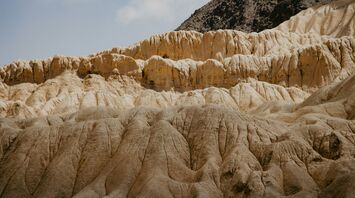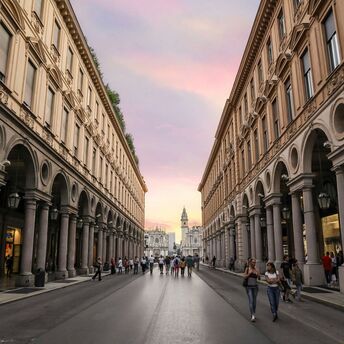Exploring Ladakh’s Suru Valley: A Hidden Gem for Trekkers in India

Tucked away in the remote landscapes of Ladakh, the Suru Valley is an unspoiled treasure for those who seek adventure and serenity away from the usual tourist paths. Known for its dramatic mountain vistas, vibrant cultural heritage, and challenging trekking routes, this lesser-known region of India offers a unique experience for travelers looking to immerse themselves in the raw beauty of the Himalayas. For those who are willing to venture off the beaten track, Suru Valley promises an unforgettable journey into one of India’s most pristine natural environments.
The Allure of Suru Valley: A Trekker’s Paradise
Suru Valley, located in the Kargil district of Ladakh, is a region of striking contrasts, where verdant fields and fruit orchards are set against the stark, snow-capped peaks of the Greater Himalayas. The valley, often overlooked in favor of more popular Ladakh destinations, offers a quieter, more intimate connection with nature. According to National Geographic, the valley is a hidden paradise for trekkers, with trails that take you through remote villages, lush meadows, and challenging mountain passes.
One of the most remarkable features of Suru Valley is the view of the towering Nun-Kun peaks, which dominate the skyline at over 7,000 meters. These majestic mountains are a constant presence as you hike through the valley, providing both a breathtaking backdrop and a formidable challenge for mountaineers. The trek to the base camp of Nun-Kun is one of the highlights for experienced hikers, offering not only spectacular views but also a sense of accomplishment in reaching the foot of these imposing giants.
Cultural Encounters: The People of Suru Valley
Beyond its natural beauty, Suru Valley is also home to a rich cultural tapestry, woven from the traditions of the Dard and Balti communities that inhabit the region. These people have lived in harmony with the harsh environment for centuries, and their way of life is deeply connected to the land. The valley’s villages, such as Sankoo and Panikhar, offer a glimpse into a world where time seems to have stood still, with traditional mud-brick houses, terraced fields, and ancient monasteries dotting the landscape.
Visitors to Suru Valley have the unique opportunity to experience the warmth and hospitality of the local people, who are often eager to share their customs and traditions with outsiders. Staying in a homestay with a local family provides an authentic cultural experience, allowing travelers to learn about the region’s history, religion, and daily life from those who have lived it for generations. The valley’s isolation has helped preserve its cultural heritage, making it a living museum of Ladakh’s past.
The Trekking Experience: Trails Through Wilderness
Trekking in Suru Valley is not for the faint of heart, but for those who are prepared, it offers some of the most rewarding experiences in the Himalayas. The valley’s trails vary in difficulty, from moderate hikes suitable for seasoned adventurers to challenging routes that require technical skills and endurance. The treks are characterized by their diversity, with landscapes that shift from green pastures and flowing rivers to barren high-altitude deserts and glaciated peaks.

One of the most popular treks in the valley is the route from Suru to Rangdum, which takes you through some of the most stunning scenery in the region. This trek, typically completed in five to six days, passes through remote villages, crosses high mountain passes, and offers unparalleled views of the Zanskar Range. Another notable trek is the journey to the Drang-Drung Glacier, a massive river of ice that is one of the largest in Ladakh. The trek to the glacier is challenging but offers a rare opportunity to witness the raw power of nature in one of the world’s most rugged landscapes.
Practical Tips: Preparing for the Journey
Traveling to Suru Valley requires careful planning and preparation, particularly for those intending to trek through its remote areas. The valley is accessible from Kargil, the nearest town, which is connected by road to Srinagar and Leh. The best time to visit Suru Valley is during the summer months, from June to September, when the weather is milder and the trekking routes are passable.
Given the valley’s remoteness, it is important for trekkers to be self-sufficient, carrying all necessary supplies, including food, camping gear, and medical kits. Hiring a local guide is highly recommended, as they can provide invaluable knowledge of the terrain, weather conditions, and cultural sites. Additionally, travelers should be prepared for the high altitude, taking time to acclimatize and avoid altitude sickness.
The Future of Suru Valley: Balancing Tourism and Preservation
As more travelers discover the hidden beauty of Suru Valley, there is a growing need to balance tourism with the preservation of the region’s natural and cultural heritage. Sustainable tourism practices are essential to ensure that the valley remains unspoiled for future generations. This includes respecting local customs, minimizing environmental impact, and supporting community-based tourism initiatives that benefit the local population.
The National Geographic article emphasizes the importance of responsible travel in remote regions like Suru Valley. By choosing to travel in a way that honors the environment and the people who live there, visitors can help protect this unique corner of the Himalayas while still enjoying its incredible beauty and adventure.



















